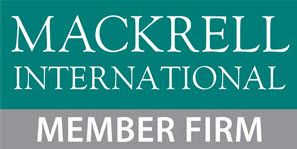By Curtis A. Welch
Published in the NACM Commercial Services Business Credit Journal
In May 2001, the Washington legislature amended RCW 18.27.040 by increasing the registration bond amount for general contractors to $12,000. Laws of 2001, ch. 159, sec. 3. That bond amount has remained the same since that time, as has the $6,000 bond amount for specialty contractors.
As many practitioners have experienced, those amounts have not been nearly enough to compensate claimants for their losses.
The Washington legislature addressed this matter this past legislative session, passing HB 1534, which was signed into law by Governor Inslee on May 1, 2023. Among other amendments, the new law amends RCW 18.27.040(1) by increasing the bond amount for general contractors to $30,000 and increasing the bond amount for specialty contractors to $15,000.
These increased bond amounts take effect as of July 1, 2024. Thus, for initial contractor registrations and for renewal registrations occurring on or after July 1, 2024, the amount of contractor registration bonds must be in those increased amounts.
These increases are encouraging news for suppliers, subcontractors, and equipment rental companies, whose claims are a large percentage of claims filed against contractors’ registration bonds. Recovery for these types of claimants have been limited not only by the relatively small amount of the bonds but also by RCW 18.27.040(5). Under RCW 18.27.040(5), the amount paid from a contractor’s registration bond to those other than residential homeowners is limited to one-half of the bond.
Recoveries are even more limited if there are competing claims against the contractor’s bond. See RCW 18.27.040(4).
Accordingly, claims against a contractor’s bond have often been viewed as not entirely effective, particularly in relation to larger claims, but even as to smaller or moderately-sized amounts owed, claims against registration bonds are seen as just one avenue of recovery.
Claims against a contractor’s registration bond in Washington are initiated by filing an action in the Superior Court of the county in which the work was done, or the Superior Court of any county in which jurisdiction of the contractor may be had. RCW 18.27.040(3). The suit must be filed within one year by all claimants other than residential homeowners, and must be filed within two years for residential homeowners. Id. The one-year period for claimants other than residential homeowners runs from the “date the claimed labor was performed and benefits accrued, taxes and contributions owing the state of Washington became due, materials and equipment were furnished, or the claimed contract work was completed or abandoned, whichever occurred first.” Id.
Service of the complaint and summons is done by service of three copies of the complaint and summons, along with the required fee (currently $55.00) to the Department of Labor & Industries’ Contractors Section. Service on the Department is by certified mail or by delivery service requiring notice of receipt. Id.
It is important to note that service on the Department of Labor & Industries only effects service on the surety, and effects service on the contractor only to the extent of the bond. Subcontractors and Suppliers Construction Services v. McConnachie, 106 Wash. App. 738, 743 (2001); Ahten v. Barnes, 158 Wash. App. 343, 359 (2010); Mid-City Materials, Inc. v. Heater Beaters Custom Fireplaces, 36 Wash. App. 480, 484-85 (1984).
Thus, in all cases, the claimant should also personally serve the contractor in addition to service on the Department of Labor & Industries because of the fact that personal service on the contractor is required for jurisdiction over the contractor for amounts not covered by the contractor’s registration bond.
In contrast to the procedure regarding claims against a contractor’s registration bond in Oregon and the forms and notices that need to be sent to the CCB, the primary notice to the Washington Department of Labor & Industries is service of the summons and complaint on the Department at the outset of the case. In addition, a claimant also must deliver to the Department a certified copy of the judgment once judgment has been entered against the contractor.
Residential homeowner claims
Among the other important provisions of HB 1534 are the increased protections to homeowners. The new law establishes a Homeowner Recovery Program (“HRP”). These provisions are codified in new sections added to RCW 18.27.040.
Under the HRP, a Homeowner Recovery Account will be established. Revenues from all fines and penalties collected by the Department of Labor & Industries under the Contractor Registration Act must be transferred into the Homeowner Recovery Account. Under the new law, fines against unregistered contractors are increased, to a range from $1,200 to $6,000.
The Homeowner Recovery Account is solely for the payment of homeowner claims under the HRP. A homeowner claim is eligible for payment from the Homeowner Recovery Account once the following conditions are met: 1. The claimant has a final judgment in court against a registered contractor in relation to work on the claimant’s primary residence; 2. The judgment specifies the actual damages as a consequence of the claim; 3. The claimant has proceeded against any existing bond covering the contractor; 4. The judgment has not been satisfied in full; and 5. The claim for recovery under the HRP is made within 90 days after the conclusion of any civil action brought under RCW 18.27.040(3).
Payment to a homeowner is limited to the homeowner’s actual damages awarded in a final judgment after recovery against the contractor’s bond. Payments cannot exceed $25,000 per contractor per parcel, or the amount unpaid on the judgment, whichever is less. There is also a provision in the new law for a wait list for eligible claims not yet paid and awaiting further State funding into the Homeowner Recovery Account.
Conclusion
The increases in bond amounts are a welcome change. Even though the new bond amounts may still not be sufficient to pay an entire claim, the increases are beneficial in another respect. Since contractors are required to repay to their bonding company under indemnity agreements all amounts the bonding company has paid to claimants, a contractor (including a corporate contractor’s principals who signed the indemnity agreement) faced with having to repay up to $30,000 to their bonding company, instead of $12,000 under the current law, will have added incentive to resolve matters with subcontractors, suppliers, equipment rental companies, and homeowners before a claim is made.
As noted above, claims against contractor’s registration bonds are just one of the tools for recovery, but soon will be a tool with increased effectiveness.
NACM Commercial Services Business Credit Journal September-October 2023 Issue


